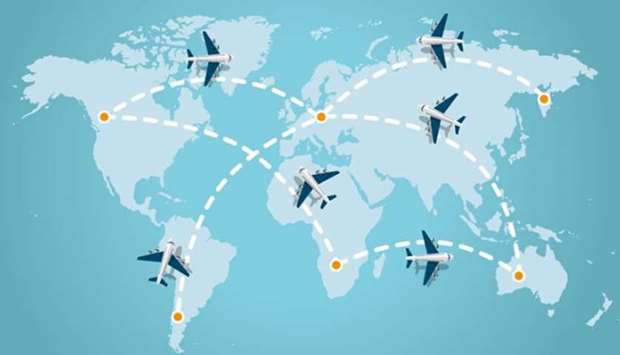The Middle East’s carriers had a slight relief in September as their passenger traffic recorded lower decline of 90.2% compared with 92.3% demand drop in August, according to the International Air Transport Association (IATA).
The regional carriers’ capacity tumbled 78.5%, and load factor sank 40.9 percentage points to 34.4%, IATA said in its latest report on air passenger traffic.
Globally, IATA said that passenger demand in September remained “highly depressed”.
Total demand (measured in revenue passenger kilometres, or RPKs) was 72.8% below September 2019 levels (only slightly improved over the 75.2% year-to-year decline recorded in August).
Capacity was down 63% compared to a year ago and load factor fell 21.8 percentage points to 60.1%.
International passenger demand in September plunged 88.8% compared to September 2019, basically unchanged from the 88.5% decline recorded in August. Capacity plummeted 78.9%, and load factor withered 38.2 percentage points to 43.5%.
Domestic demand in September was down 43.3% compared to the previous year, improved from a 50.7% decline in August. Compared to 2019, capacity fell 33.3% and the load factor dropped 12.4 percentage points to 69.9%.
IATA director general and CEO Alexandre de Juniac said, “We have hit a wall in the industry’s recovery. A resurgence in Covid-19 outbreaks – particularly in Europe and the US – combined with governments’ reliance on the blunt instrument of quarantine in the absence of globally aligned testing regimes, has halted momentum towards re-opening borders to travel.
“Although domestic markets are doing better, this is primarily owing to improvements in China and Russia. And domestic traffic represents just a bit more than a third of total traffic, so it is not enough to sustain a general recovery.”
He added, “Last week we provided analysis showing that the airline industry cannot slash costs fast enough to compensate for the collapse in passenger demand brought about by Covid-19 and government border closures and quarantines. Some 4.8mn aviation-sector jobs are imperiled, as are a total of 46mn people in the broader economy whose jobs are supported by aviation.
“To avoid this economic catastrophe, governments need to align on testing as a way to open borders and enable travel without quarantine; and provide further relief measures to sustain the industry through the dark winter ahead. A broader economic recovery is only possible through the connectivity provided by aviation.”
Globally, IATA said that passenger demand in September remained “highly depressed”.
Total demand (measured in revenue passenger kilometres, or RPKs) was 72.8% below September 2019 levels (only slightly improved over the 75.2% year-to-year decline recorded in August).
Capacity was down 63% compared to a year ago and load factor fell 21.8 percentage points to 60.1%.
International passenger demand in September plunged 88.8% compared to September 2019, basically unchanged from the 88.5% decline recorded in August. Capacity plummeted 78.9%, and load factor withered 38.2 percentage points to 43.5%.
Domestic demand in September was down 43.3% compared to the previous year, improved from a 50.7% decline in August. Compared to 2019, capacity fell 33.3% and the load factor dropped 12.4 percentage points to 69.9%.
IATA director general and CEO Alexandre de Juniac said, “We have hit a wall in the industry’s recovery. A resurgence in Covid-19 outbreaks – particularly in Europe and the US – combined with governments’ reliance on the blunt instrument of quarantine in the absence of globally aligned testing regimes, has halted momentum towards re-opening borders to travel.
“Although domestic markets are doing better, this is primarily owing to improvements in China and Russia. And domestic traffic represents just a bit more than a third of total traffic, so it is not enough to sustain a general recovery.”
He added, “Last week we provided analysis showing that the airline industry cannot slash costs fast enough to compensate for the collapse in passenger demand brought about by Covid-19 and government border closures and quarantines. Some 4.8mn aviation-sector jobs are imperiled, as are a total of 46mn people in the broader economy whose jobs are supported by aviation.
“To avoid this economic catastrophe, governments need to align on testing as a way to open borders and enable travel without quarantine; and provide further relief measures to sustain the industry through the dark winter ahead. A broader economic recovery is only possible through the connectivity provided by aviation.”


